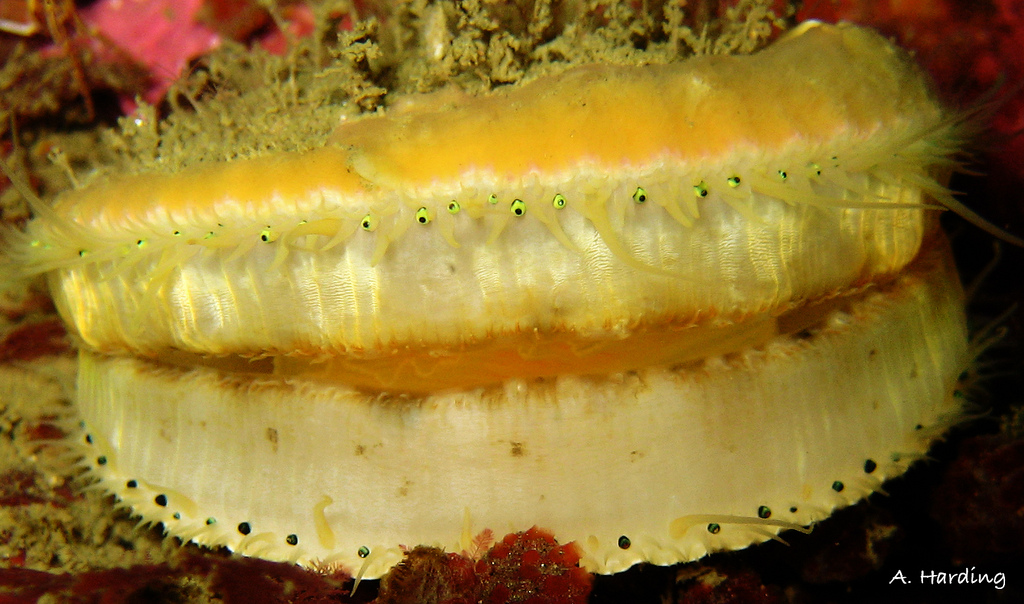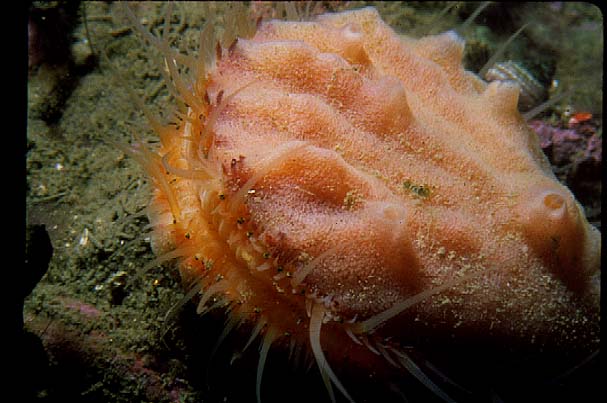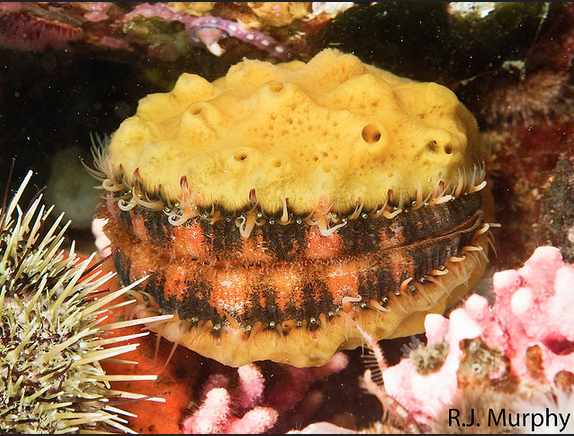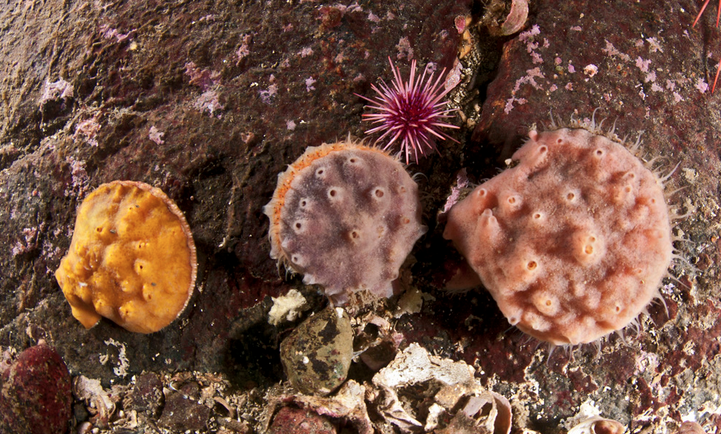This sponge can be found on rocky subtidal areas at Race ROcks It commonly grows over the surface of swimming scallop shells. It is believed to form a mutualistic association with the swimming scallop, obtaining a moveable substrate while preventing predation of the scallop. Apparently the smell of the sponge deters the sea stars which may be intending to prey on the scallop

Adam harding took this photo off the docks at Race Rocks. The shell of the scallop is covered with the orangish layer of sponge with attached hydroids.
It is an extremely variable widely distributed species ranging from intertidal to 2540 m
Colour: the colour in life ranges through various shades of gold occasionally to a light gold-brown with a slight tinge of rose. In alcohol the sponge is grey-white to yellowish-brown.
Form: The sponge is incrusting or occasionally massive
Size: Intertidal incrusting forms re up to 8 cm thick an 20 cm in diameter. Dredged massive forms have a diameter of up to 9 cm. Fistules are up to 25 mm high.
Consistency: the consistency is moderately firm and tough. some specimens are weakly spongy and fragile.
Surface: The surface varies from slightly roughened and tuberculate to highly rugose and fistulated. It is somewhat rough to the touch
Oscules: oscules are common or abundant and irregularly distributed. Oscules may be elevated on fistules when the latter are present. Oscules are from 033 to 8 mm in diameter.
Pores: pores are abundant and measure from 20 to 270u in diameter.
| Domain | Eukarya |
| Kingdom | Animalia |
| Phylum | Porifera |
| Class | Demospongiae |
| Order | Poecilosclerida |
| Family | Myxillidae |
| Genus | Myxilla |
| Species | incrustans |
| Common Name: | incrusting sponge |
|
This file is provided as part of a collaborative effort by the students of Lester B. Pearson College
|
Oct 2003 | Roberto Ruglio year 30 |



